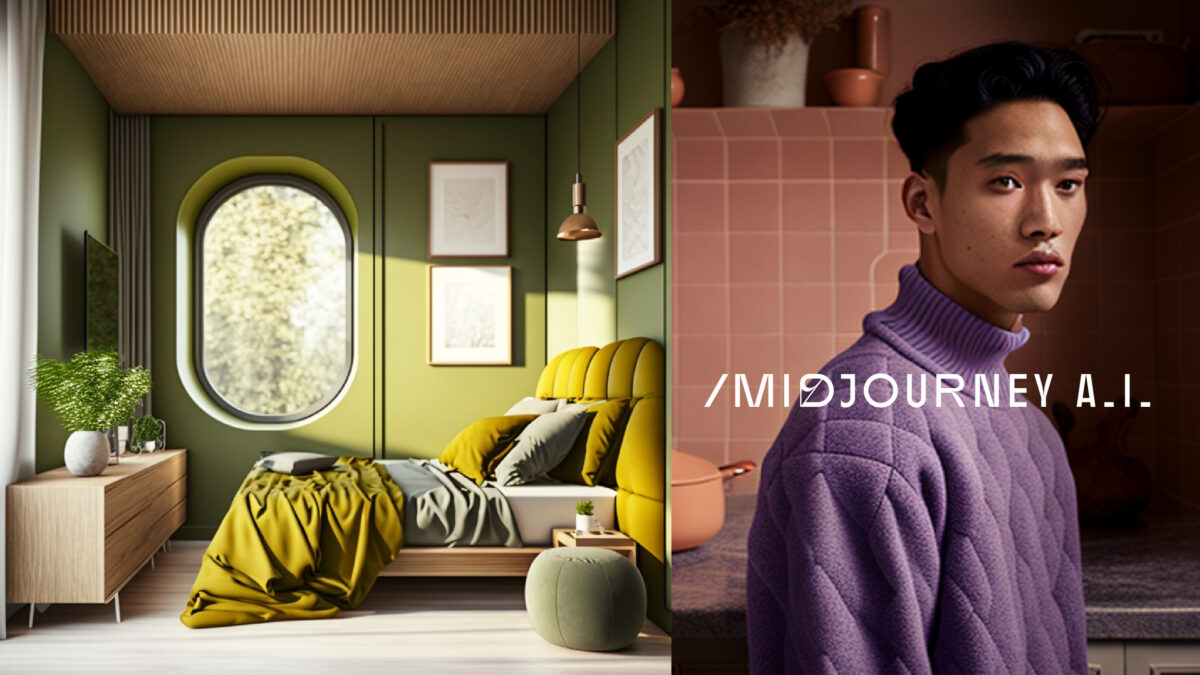I’m sure you’ve been hearing a lot about AI (Artificial Intelligence) use lately. If you’ve been following the design world, the MidJourney and Dall-E programs have become very popular in generating artwork. If you’re unfamiliar, these programs basically use deep learning algorithms that analyze different art styles, techniques, and subjects to create new images that are similar but not identical to existing ones. This is done by inputting simple word prompts (or more complex, specific prompts). You can choose the type of art you want to generate, like landscapes, portraits, or abstracts, and adjust the parameters like color schemes, brushstrokes, and composition by the wording you input.
I started playing around with Midjourney last August of last year but didn’t dig too deep. I recently started playing with it again, and it’s been fascinating, to say the least.
The speed at which the program can generate a high-quality and highly detailed image is mind-blowing. Also, once an initial series has been created, you can go back and have it regenerate additional images or variations in a matter of seconds. It’s not perfect, and there are still some weird glitches that can occur. You have to experiment with the prompts, however, overall its really impressive.
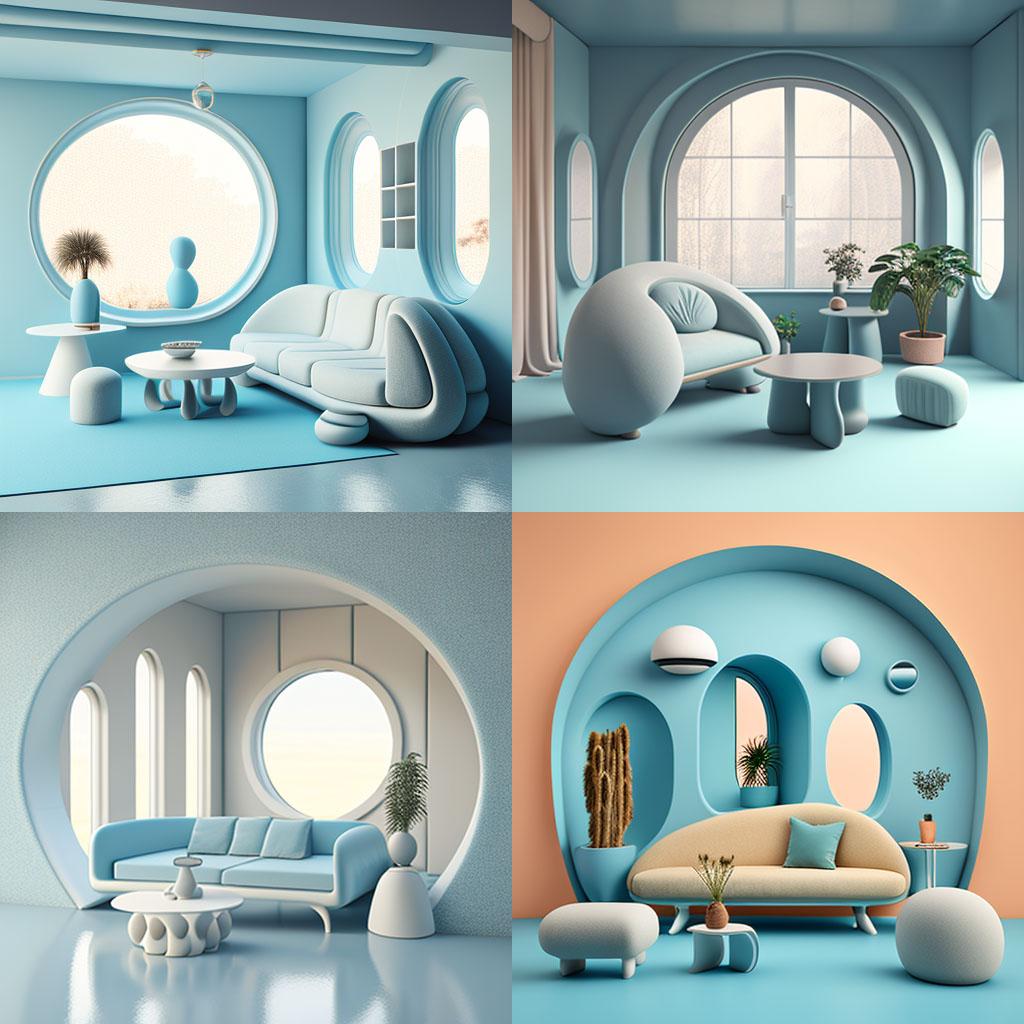
While all of this is really cool, it also brings up a lot of questions and concerns.
The AI has to pull from existing references and morph bits and parts of them, depending on what word prompts it receives, but you don’t know where these references are being pulled from. There have already been artists finding out that the AI has basically ripped off their artwork to generate a “new” piece. Since the artworks generated by Midjourney are not created by human artists, there is no clear legal framework to protect the original artists’ rights. Recently, there has been a lawsuit from one of the world’s largest image banks, Getty Images, against an AI program. It will be very interesting to see how this case turns out and how the verdict will affect AI programs in the future.
Another question is, who owns the artwork generated by Midjourney? As the artworks are generated by AI algorithms, it’s unclear who holds the rights to the artwork. I feel there needs to be some regulation overall on where the source images the AI is learning from are coming from and perhaps a plan for compensation to the artists or models that it is referencing.
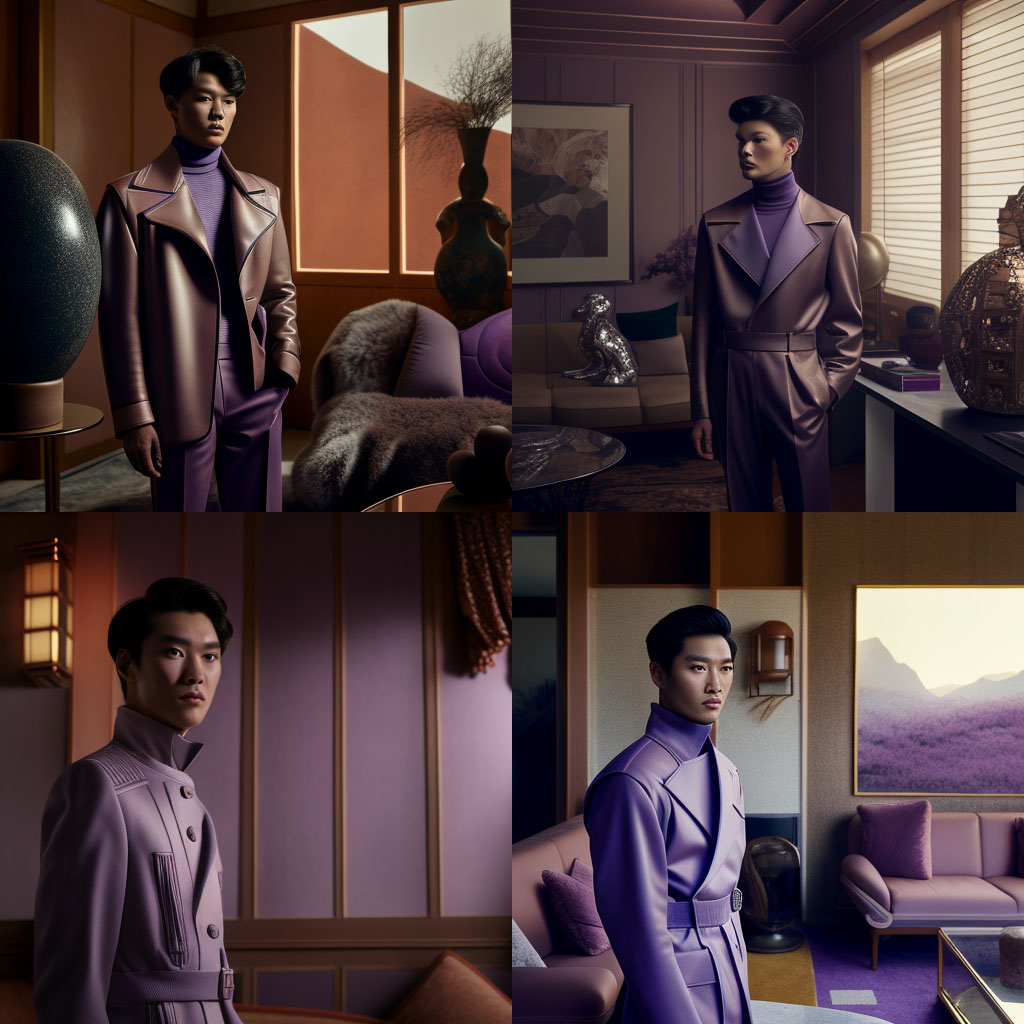
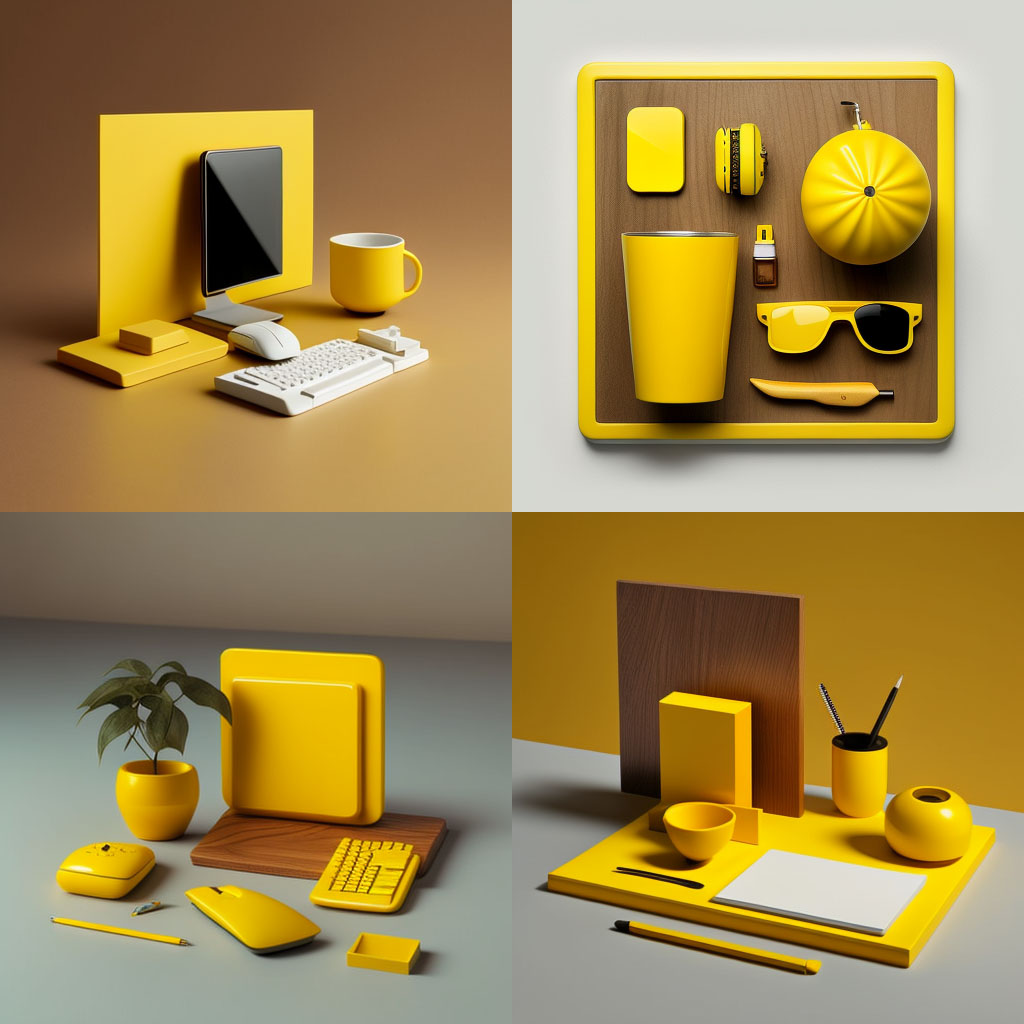
With Midjourney as it currently stands, I feel uncomfortable claiming any “ownership” of the images created on it using the prompts I put in. As a designer, I feel like I didn’t really do anything? I guess you could say I “art directed” these. However, I wouldn’t feel comfortable claiming this was “my” artwork. With these prompt based images, you don’t really know what the AI will generate. It’s a toss-up to see if you’ve been able to accurately describe what you might be envisioning and have the AI interpret it to match. You don’t really have a lot of control on how an image is going to be created. You can keep adjusting and refining the word prompts after seeing an initial render, but that isn’t a perfect science. Some of the prompts I’ve entered have been ignored by the AI altogether (perhaps it is not understanding them or not having an apparent reference). Currently, you can’t edit an image in the program, like move something around or re-edit just a small part. There’s also a strange, I’m not sure how to describe it, but there’s definitely a “look” to these? A distinct “sheen” to the images, but that could also be said of most rendered images in general.
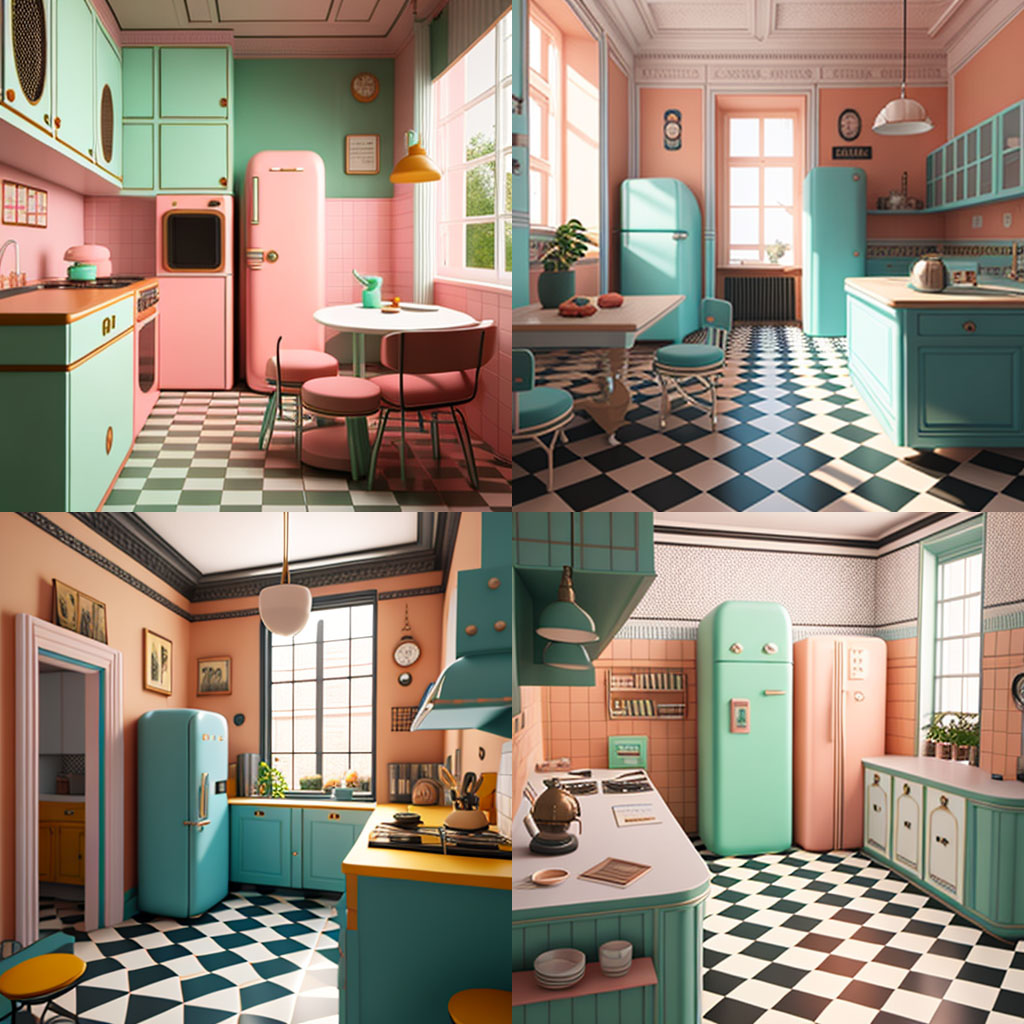
Overall, I see the potential benefits of using this AI art-generating software in some capacity. It could be a great for thought starters, generating quick comps, or images for moodboards. It would be even better if there was an ability to go back and edit (which may already be developed in another prgram or is in the works) Many of us are already using AI technology in image creation, with Photoshop’s “content aware” feature as an example. The ability to comp up with a quick set of ideas or concepts quickly could save a lot of time. I don’t think the use of AI generated imagery is going to be going away anytime soon. It definitely is the future, there just needs to be some regulations put in place.
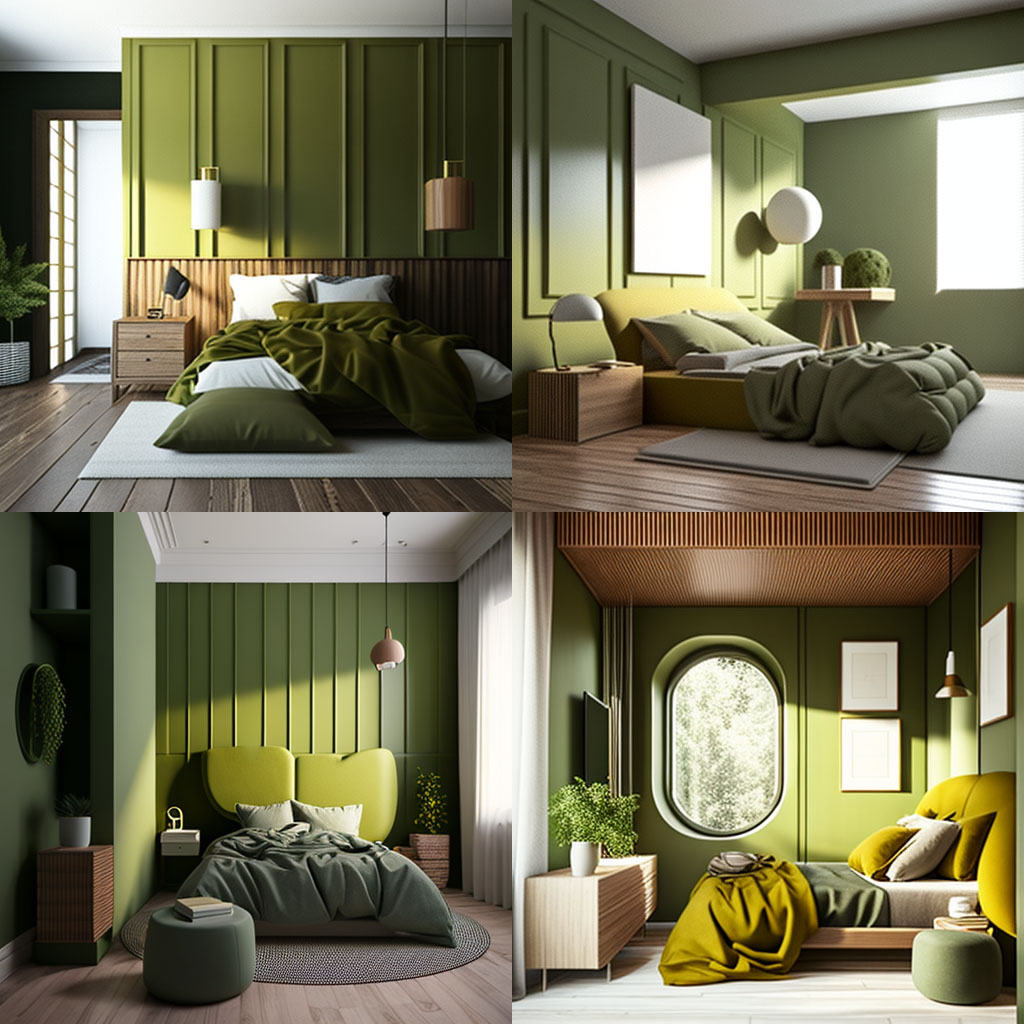
Have you been using AI generated images? This is such a fascinating topic, and one that I’m sure we will be talking about for a long time coming. I’d love to hear your thoughts- Hit me up in a dm on Insta, email me, or leave a comment.
Don’t forget to sign up for my newsletter to get notified of all my latest musings and shenanigans. Sign up here!
